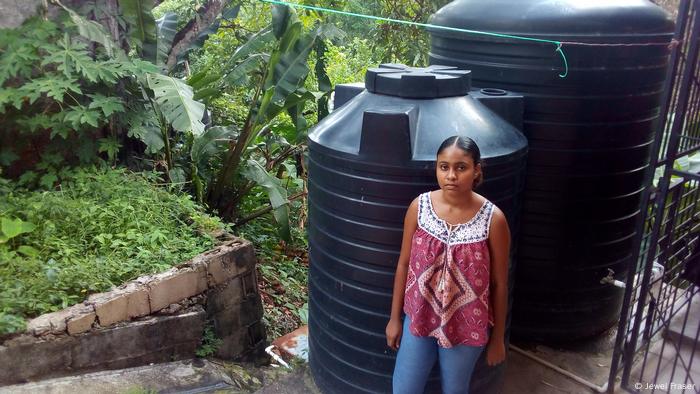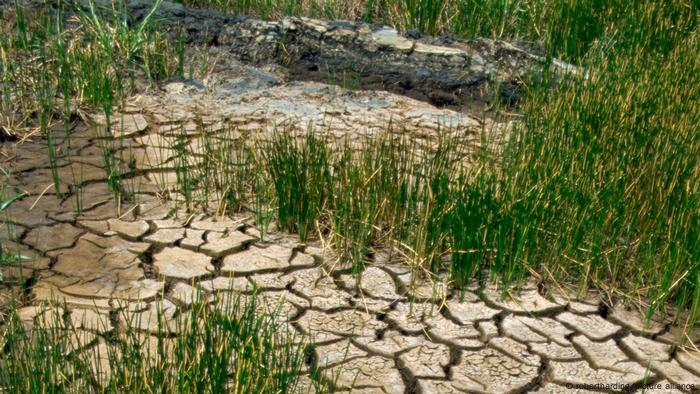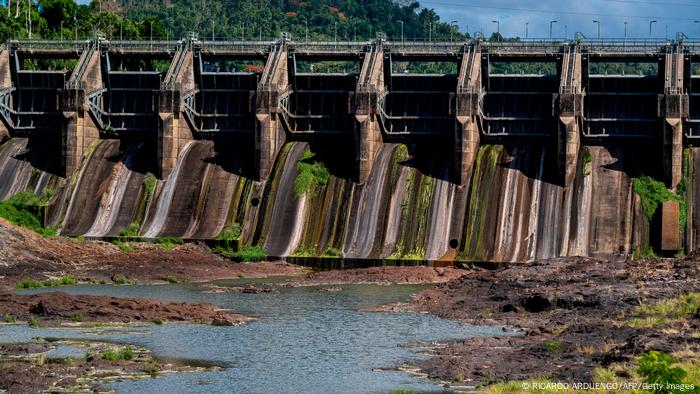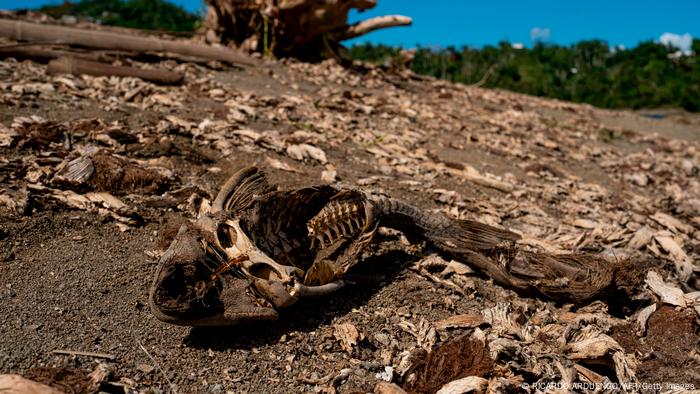Monitoring Desk
The picturesque tropical islands are surrounded by water, yet shortages are a daily reality for many. Rising temperatures and low rainfall could make matters worse.
Noreen Nunez lives in a middle-class neighborhood that rises up a hillside in Trinidad’s Tunapuna-Piarco region.

Accessed by a long, winding road bordered by trees, the houses, built in the 1970s and 1980s, are mainly painted in pastel shades. Dotted among fruit trees in their sizeable backyards are huge water tanks, mounted on concrete slabs.
The tanks are evidence that even this affluent community is not insulated from the water-stress experienced across the Caribbean.
Residents fill the tanks from the main pipes to use during scheduled outages by the water authority. But the supply is often unreliable and further impacted by low pressure for those living further up the hill.
Nunez says outages have become a regular occurrence, with water often shut off for all but a few hours during the night.
“Most of the time you have to buy food from outside or have food catered and buy bottles of water to drink,” she said. “You use disposable dishes.”
Patchy infrastructure and leaky pipes
Antigua and Barbuda, St. Vincent and the Grenadines, and St. Kitts and Nevis are all classed as water scarce, which the UN defines as countries with less than 1000 cubic meters per capita of renewable water resources a year.
Barbados’ situation, with only 350 cubic meters per capita, is especially grave, according to Keithroy Halliday, general manager of the Barbados Water Authority.
While most people outside of rural mountainous areas in the Caribbean are connected to the public water supply, they frequently face outdated infrastructure in need of repair, resulting in major losses of drinking water.
Alan Poon King, head of Trinidad and Tobago’s Water and Sewerage Authority (WASA), says the utility loses as much as 60 million gallons of water each day from leaking infrastructure — and that much again is wasted by problems like leaking taps on private properties.

The picture is similar in Jamaica, which Peter Clarke, managing director of the country’s Water Resources Authority, says suffers from “a serious loss of water that has been produced and is supposed to be delivered, but it is not reaching the end user because of the aging infrastructure — it’s leaky, it’s perforated.”
Climate change increases pressure
If these structural problems are left unaddressed, things are only likely to deteriorate as the planet heats up.
“There are many other problems that are facing the water sector in the Caribbean and climate change is exacerbating those existing, underlying conditions,” said Adrian Cashman, who sits on the global technical advisory committee for the Global Water Partnership.
Officials say drought conditions across the region over the past couple of years mean there just hasn’t been enough rain to replenish aquifers at the usual rate.
“This past summer [in Jamaica] we went through a significant drought,” said Clarke. “It really was challenging for the water supply providers.”
In Trinidad and Tobago, Poon King said it was difficult to quantify the impacts of climate change, but that it was an ongoing challenge: “We’ve seen reduced precipitation that could be anywhere in the range of 10-20% in the dry season.”

Halliday said climate change has already “significantly impacted” Barbados’ water supply, too. All of Barbados’ internal renewable water resources come from rainfall, he explained, and in 2019 the country saw its lowest recorded levels since 1947.
Climate finance and water-wise living
The Caribbean region enjoys relatively high standards of living, with most countries defined by the UN as “upper-middle income.” This excludes them from much international development funding. At the same time, high levels of public debt combined with their vulnerability to climate change makes it difficult to secure investment in infrastructure.
However, one of the region’s first major water projects financed by the Green Climate Fund (GCF), which was set up to help developing countries cope with the changing climate, is currently underway in Grenada.
Project head Hans-Werner Theisen says about half of the €45 million the GCF has allocated to the project will be spent improving infrastructure like water tanks, reservoirs and pipes. There will also be financial incentives to cut water waste from sectors like agriculture and tourism, which are among the biggest consumers of water.
Encouraging the public to use water more carefully is key to the project in Grenada, too. “What I think is very important is that everyone, every citizen, can contribute to water-saving measures, so we have to be water-wise in day-to-day living,” Theisen said.
Elsewhere, Barbados has passed laws prohibiting the use of potable water for washing cars, gardening, filling swimming pools and similar activities. As in Jamaica, people are encouraged to use wastewater for such activities.
Water, water everywhere…

Despite day-to-day water outages, a 2017 UN Water report showed most people in the Caribbean have access to a safe — if irregular — water supply.
But in Trinidad, Nunez is infuriated living on an island with 360-views of the turquoise waters and nothing coming out of the tap.
“Water and air are things that humans need to live,” she added. “I can’t understand how on an island surrounded by water, they can’t find some way of using — desalinating — the water.”
According to 2019 figures, the region gets some 12% of its water supply from desalination. Poon King said in Trinidad and Tobago that figure is 20% but expanding this is problematic due to high energy costs.
For Nunez, water shortages are out of step with her country’s development status. Trinidad and Tobago have profited from its oil reserves. Yet despite its high income, it struggles to adequately supply this most basic of necessities.
“There are glass buildings and universities and huge international airports and everything like this, but there is no water,” she said. “We’ve got the latest architectural structures and homes and houses, but it seems like indoor sanitary ware and kitchens are just for show.”
Courtesy: DW






